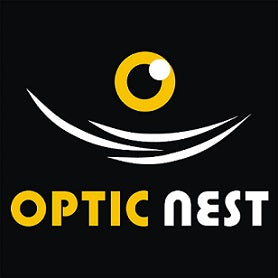
Smart Glasses for hearing impaired
Madhav Lavakare's Journey to Creating Accessible Technology for the Hearing Impaired
Madhav Lavakare’s path to innovation began with a deeply personal experience while he was in high school. Among his friends was someone who faced significant challenges due to hearing loss, making it nearly impossible to understand teachers and classmates during discussions. This struggle caught Madhav's attention, and what he witnessed deeply moved him. He saw how a lack of accessible communication technology made it difficult for people with hearing impairments to fully participate in the classroom and social interactions, causing frustration and isolation.
Lavakare realized the importance of finding a solution that could make life easier for his friend and others in similar situations. His first step was to investigate existing hearing devices. However, he quickly discovered that many of the available hearing aids and assistive listening devices were prohibitively expensive. Most high-end devices, which could significantly improve quality of life for those with hearing loss, were priced far beyond what many individuals and families could afford. This left a significant gap in access to critical technology.
This experience prompted Madhav to dig deeper into alternative solutions. He became curious about leveraging modern technology to bridge this gap. His research led him to explore automatic speech recognition (ASR) technology, which had advanced considerably in recent years. ASR technology, widely used in applications like voice assistants and transcription services, has the ability to convert spoken language into text in real time. Madhav saw immense potential in this technology to assist those with hearing loss by providing live captions of conversations.
Driven by this insight, he began thinking of ways to apply ASR technology to the daily lives of people like his friend. Madhav realized that, with a simple smartphone application, it would be possible to capture speech in real-time and display it as text on the screen. This app would essentially work like live captioning, enabling hearing-impaired users to read what others were saying as the words appeared in front of them.
This idea had several advantages over traditional hearing aids. First, it would be much more affordable than the expensive hearing devices on the market. Since the app could be developed for smartphones—devices that many people already owned—it would also be accessible to a much wider audience. Additionally, the app could work in various environments, from classrooms to social gatherings, helping users stay engaged in conversations without relying on expensive hardware.
Madhav’s innovation reflects a growing movement toward inclusive design, where technology is created not just for the mainstream but for those who often find themselves marginalized by traditional product development. He tapped into the potential of live captioning, a tool often used in media and broadcasting, and envisioned how it could be adapted to assist the hearing-impaired in everyday conversations.
The app Madhav developed would automatically convert speech into text, providing real-time captions for anyone with hearing impairments. By utilizing smartphone microphones and ASR algorithms, the app would transcribe spoken words almost instantly, allowing users to follow conversations seamlessly. Madhav’s idea went beyond just developing an app; it embodied the idea of using existing technology to solve real-world problems.
By focusing on accessibility and affordability, Madhav Lavakare sought to break down barriers and improve communication for those who had previously been left out of the conversation. His initiative not only addressed the practical needs of his friend but also highlighted a larger issue—the need for affordable, user-friendly solutions for people with disabilities.
In conclusion, Madhav Lavakare’s journey from a concerned high school student to a technological innovator is an inspiring example of how empathy, coupled with creativity and technical insight, can lead to meaningful change. His work in developing a live-captioning app for the hearing-impaired stands as a testament to the power of technology to make the world a more inclusive and accessible place for all. By using ASR technology, he demonstrated that solutions to complex problems often lie in leveraging the tools we already have, but applying them in innovative and thoughtful ways.

C. Varghese
Sirs,
Can you help me assess the originality/software-copyrightability (patentability), and practicality of a new system of eye glass and mobile phone and laptop or ipads based signals to help the deaf. And also help normal persons required speech pathology and audiology help such as actors, speech defective persons etc? Thanks. cvargis2001@yahoo.com